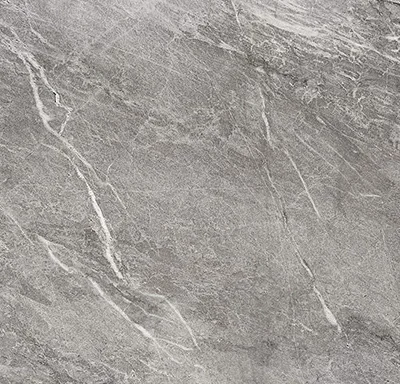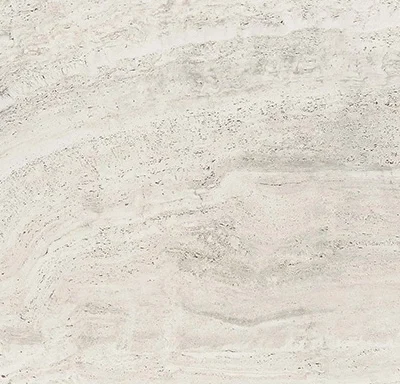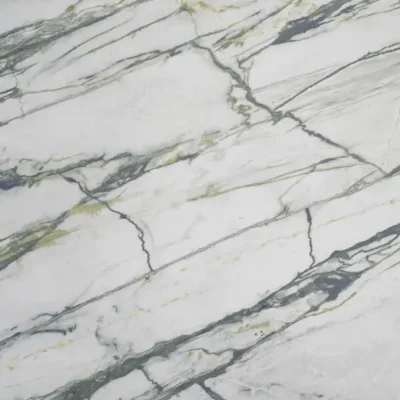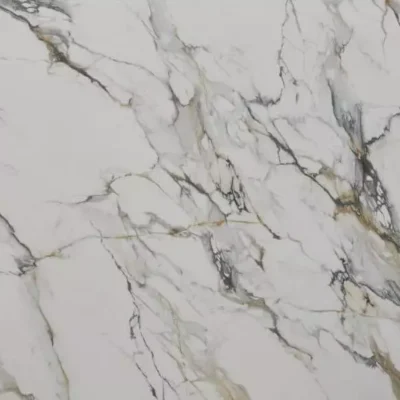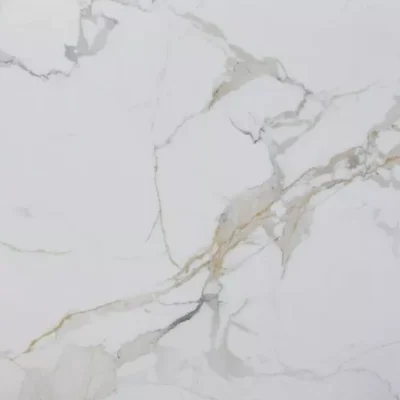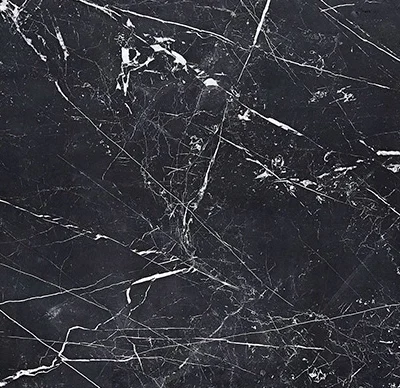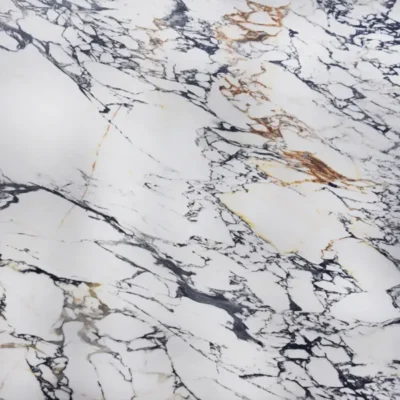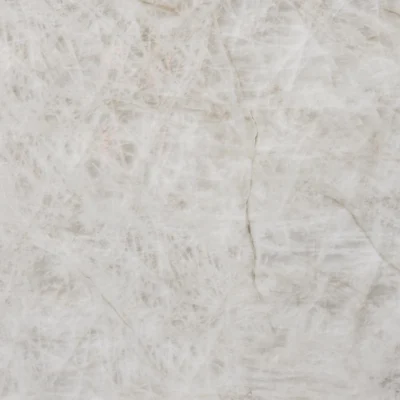Sintered Stone Slabs
Product Categories
- Stone Slabs – Stone Slabs Stone slabs have become a progressively favored selection for home interiors in recent times due to their enduringness, versatility, and aesthetic charm. With a vast array of options available, stone slabs present an alternative that can cater to your specific necessities and inclinations, be it revamping your floors, walls, worktops, or fireplaces. When it comes to designing stunning and functional living spaces, stone slabs offer countless possibilities, ranging from a diverse spectrum of colors, patterns, and textures to several finishing and edging choices. Undoubtedly, stone slabs are the preeminent preference for your home’s interior, and this article will elaborate on why this is so, highlighting their distinctive attributes, innovative options, and maintenance recommendations. With stone slabs, you can achieve exceptional results that surpass all other possibilities, ensuring that your home interiors stand out with their elegance and refinement. Unique Properties of Stone Slabs Stone slabs have emerged as the quintessential choice for homeowners who prioritize quality, longevity, and aesthetic allure in their abodes. With their distinctive features, they stand apart from other materials like laminate or tile, as they provide a gamut of advantages that can transform the design and functionality of your home. Let’s delve into the…
- Travertine Slabs – TRAVERTINE SLABS The products you select can make all the difference in producing a beautiful, long-lasting final product when it comes to building and landscaping. Travertine is one such substance that has been utilized for millennia in building and design. Natural stone called travertine is gaining popularity in contemporary buildings and landscaping, especially in outdoor applications. They provide a number of advantages, such as toughness, aesthetic appeal, and organic variations in texture and hue. In Sydney, Aquatic Drive is a popular location for landscaping projects that incorporate travertine due to its close proximity to suppliers and ease of transportation. Whether you’re using travertine for pathways, patios, or pool surrounds, the products can withstand heavy foot traffic and harsh weather conditions. With the right installation techniques and maintenance, your travertine landscaping project on Aquatic Drive can last for years to come. The Pros and Cons of Travertine Slabs for Flooring: Is it a Durable and Practical Choice? A natural stone known as travertine has been employed in architecture for many years. Due to its sturdiness, aesthetic allure, and inherent variations in texture and colour, it is a preferred option for flooring. However, it’s crucial to balance the benefits and drawbacks before…
- Granite Slabs – Granite Slabs in Sydney Granite slabs have a well-earned reputation for toughness and easy maintenance, making them popular in kitchens. Granite Slabs are exceptionally long-lasting and very attractive, with a broad range of designs and colors to select. Granite is a highly sought-after countertop material that continues to increase in popularity. Granite slabs offer great flexibility in indoor and outdoor settings due to their durability, strength, heat, and chemical resistance. At Avant Stone, we believe in being the Granite Supplier in Sydney that sources only the best granite slabs available; our slabs are ‘first selection’ materials. Our philosophy is to be the Granite Supplier that finds colors that are suited to the tastes of the Australian Market. Genuine natural stone including marble, travertine, granite slabs, is the “natural choice” for countertop surfaces. They are quarried from the ground in their natural state and cut into slabs for your home. Unlike quartz / reconstituted Natural Stone Slabs, granite slabs are processed with minimal use of resin and chemicals. How Many Variations of Granite Slabs Are Available? Granite Slab is available in a broad range of hues and patterns. Granite is a hard igneous rock made up of a variety of minerals such as quartz, mica, feldspar, and others. Produced…
- Marble Slabs – Marble Slabs Avant Stone is Sydney’s premier supplier of Natural Stone Slabs. Our focus is finding quality materials, sourcing only the marble slabs that feature patterns and colors that are suited to the modern Australian architectural palette. Marble throughout history has been the choice material across different regions and cultures, famous examples of its use include St Peter’s Basilica and the Parthenon. In the modern context, the application of marble remains as popular as ever due to its eco-friendly credentials. Marble slabs Sydney do not require harmful resins and chemicals during their production. Marble is also a great insulator, keeping your home or commercial space cool during the hot Australian summer. What is Marble? Marble starts life as limestone which through geological processes is recrystallized under heat and pressure. Over millennia as ocean floors slowly spread, limestone seabeds get dragged into the Earth’s crust, turning into marble Sydney with heat and pressure. The movement of the Earth’s crust causes arabescato marble to twist and warp. This process of heating and warping is responsible for the marble’s trademark waves and patterns. Colour of Marble Slabs Marble slabs are available in various colors, of which white marble and grey are the most…
- Quartzite Slabs – Avant Stone Your Quartzite Slab Supplier Avant Stone prides itself on having the highest quality quartzite slabs in Sydney. Our aim is to promote Natural Stone Slabs in Sydney, as they combine the best feature of Marble and Granite. Come select the perfect surface at Sydney’s premier quartzite supplier, Avant Stone. Quartzite is an extremely hard metamorphic rock. It is one of the densest natural stones and has a stronger physical structure than even granite. Quartzite slabs along with their physical durability, share the patterns and premium look of marble, making them nature’s wonder material. Quartzite – what is it exactly? Quartzite slabs are compromised almost entirely of the mineral quartz, with an added combination of calcite and silica. Quartzite begins its geological life as sand grains that over time are compressed to form sandstone. The sandstone with a combination of heat and pressure over time fuses together forming a dense, durable rock. Quartzite tends to have a beautiful appearance and a glassy luster. How durable are Quartzite slabs? Quartzite is a hard and durable material. It measures at a 7 on the Mohs hardness scale. To put that into perspective, Quartzite is harder than glass and a knife blade. What colors…
- Dolomite Slabs – Dolomite Slabs Dolomite Slabs remain a popular option among designers right now. These stones make undoubtedly stunning countertops that will instantly infuse your space with a feeling of elegance and grandeur. Natural stone countertops are growing more popular subsequently due to trends and new aesthetic concepts. The most popular stones are marble and granite. However, they may not be the stone made for you. Maybe granite is above your budget, or marble doesn’t match the aesthetics you’re looking for. Dolomite Slabs provide an equivalent aesthetic with some extra durability benefits. Dolomite may be the appropriate material for you if you’re looking for a gorgeous countertop material that compliments your interior décor at a reasonable price. Why Choose Dolomite Slabs? Dolomite is a low-maintenance stone with the visual appeal of marble and the durability of granite. This stone is scratch, dent, and abrasion-resistant. It is also resistant to heat, pressure, and other forms of wear and strain. Dolomite, which comes in white and grey hues with beautiful natural veining, lends an air of elegance and refinement like marble to any kitchen. A fantastic alternative to marble for countertops in the industry, Dolomite is somewhat more durable than marble but much softer than granite, making…
- Limestone Slabs – Limestone Slabs Over the years, Limestone Slabs have become a more common form of stone application. Limestone has a striking similarity to marble, a well-loved stone. While Limestone slabs are not as conventional as marble or granite, it is an excellent material for different applications and is becoming increasingly popular. They’re far less expensive than marble and granite, and they have a natural beauty that you won’t find anywhere else. They do require a little more attention than other materials, such as sealing treatments and regular cleaning, but the extra effort will pay off in the form of pleasant and attractive appeal. Features Of Limestone Slabs Homeowners fancy the unfamiliarity of the natural evolution of Limestone. The stone is formed from marine life shells and fossils and sculpted by sand and living marine creatures. As a result, Limestone Slabs frequently have one-of-a-kind characteristics that distinguish this material, such as shell and fossil imprints. This organic beauty will make a stylish, one-of-a-kind alternative for your kitchen counters. Limestone Slabs are available in soft, natural colors like tan, beige, brown, and grey so that they can blend in with your current decor. They also have a subtle matte finish that goes with any kind and…
- Other Slabs – Sandstone Slabs Sandstone Slabs are the new stones gaining significant attention. Offering the kitchen a genuinely rich appearance, Sandstone Slabs emphasizes the design’s beauty. Sandstone Slabs are easy to work with because of their strength, frost and abrasion resistance, and water resistance. Sandstone Slab is frequently mistaken for soapstone, even though there is a significant difference. Having a Sandstone Benchtop in your kitchen ensures that you will have a beautiful, safe, and long-lasting countertop that will give your kitchen a stylish look and last a long time What are Sandstone Slabs? Sandstone Slabs are a natural material that is mined and carved from stone slabs. It has stunning earthy hues and a deep depth that is a perfect match for any modern kitchen. Sandstone Slabs successfully integrate all of the primary qualities of real stone while also having a strong visual appeal, making them a premium option as a decorative element in kitchen design. Natural stone surfaces have a deep texture that elevates the material to an exclusive status among mundane materials. Because it is ecologically safe and antimicrobial, sandstone is a wonderful alternative to granite. Sandstone Slabs need to be installed correctly and maintained regularly. How to care for…
- Natural Stone Tiles – Natural Stone tiles Natural stone tiles might be the answer you’re searching for if you’re planning a renovation or merely want to modernize your living space. These tiles are a useful option for any house because they provide a number of advantages in addition to being a classic and elegant flooring option. Natural stone tiles are a wise investment that can last for years due to their sturdiness, sustainability, and capacity to improve any design scheme. Applications of Natural Stone Tile Natural stone slabs can be a beautiful and practical flooring solution for various applications in your home. Here are some of the most common uses of natural stone tiles: Flooring From the living room to the restroom, natural stones are a great option for flooring in any area of your house. They can add a bit of refinement and beauty to any setting, and because of how long-lasting and sturdy they are, they can also be a great investment. Kitchen Backsplash Your kitchen can look amazing with a natural stone tile countertop by adding structure, color, and interest to the area. Since they are simple to clean and keep, ceramic wall tiles are also very practical in the kitchen.…
- Travertine Tiles – TRAVERTINE TILES Travertine tiles are a natural stone material that is commonly used for flooring, countertops, and walls. These Natural Stone tiles are made from a type of limestone that has been formed over time by the mineral-rich waters of hot springs. With a unique, textured surface and beautiful colors, travertine tiles are an excellent choice for adding character and style to any home. Travertine tiles are unique in many ways, with a range of characteristics that make them an excellent choice for home décor. For starters, they are made from natural stone, which makes them durable and long-lasting, able to withstand the wear and tear of daily use. They are also heat resistant, making them an excellent choice for kitchens and bathrooms. With their unique texture and natural beauty, travertine tiles made from natural stone are a great choice for anyone looking to add style and sophistication to their home. In this article, we will take a closer look at the benefits of using natural stone travertine tiles in your home. INNOVATIVE APPLICATIONS OF TRAVERTINE TILES Travertine tiles offer a wide range of applications, both inside and outside of your home. Here are some of the most popular ways…
- Cobbles
- Marble Tiles – Marble Tiles Sydney Marble tiles have long been cherished for their timeless elegance and versatility in interior design. The natural beauty and exquisite patterns found in marble tiles have captivated the hearts of designers, architects, and homeowners alike. In recent years, marble has experienced a resurgence in popularity, becoming a symbol of luxury and sophistication. Here, we will explore the creative applications of marble tiles, delve into the benefits of choosing only marble floor tiles, discuss various marble tile designs and patterns, compare marble floor tiles with other tile options, and conclude with some final thoughts on the enduring allure of marble. Creative Applications of Marble Tiles Marble Flooring Marble flooring stands as a testament to opulence and grandeur. Its smooth surface, coupled with its distinctive veining, adds a touch of luxury to any space. From majestic entryways to elegant living rooms, marble flooring exudes a sense of timeless beauty that transcends trends. Its versatility allows it to seamlessly blend with both traditional and contemporary design styles. The cool touch of marble underfoot is not only visually stunning but also offers a refreshing respite during warm summer days. Marble Wall Cladding If you’re seeking to elevate and enhance the aesthetic…
- Granite Tiles – Granite Tiles Sydney The beauty, durability, and versatility of granite tiles make them a popular choice for homeowners and designers alike. They exude a timeless allure that few other materials can rival, bringing together form and function in a stunningly seamless manner. Whether you’re planning a grand home renovation or simply looking to refresh a space, granite tiles are undoubtedly worth considering. They offer a myriad of colors, patterns, and finishes, each with its unique charm and appeal. Types of Granite Tiles When it comes to granite tiles, there are several different types to choose from, each with its own distinct look and feel. The most common finishes include honed, polished, flamed, and brushed. Honed Granite Tiles Honed granite tiles Sydney have a matte finish that is smooth to the touch. They are a great option for areas that require slip resistance, such as bathrooms and kitchens. Additionally, honed granite tiles are less likely to show fingerprints and other marks, making them a great choice for busy households. Polished Granite Tiles Polished granite tiles have a glossy finish that is highly reflective. They are perfect for areas that receive a lot of natural light, as they will reflect and amplify the…
- Basalt Tiles – Basalt Tiles Basalt, often known as bluestone in Australia, is a stone building material for residential and commercial construction. Basalt stone tiles are created from an igneous rock type that results from the quick cooling of basalt lava that has been exposed at or very close to a planet’s surface. Basalt is actually one of the most prevalent forms of rock on the planet. Because of this, stone tiles have been utilized in construction for many years, particularly as flooring tiles. These tiles are suitable for both indoor and outdoor floor and wall applications. All-natural stone has color and textural variances, and colors may differ from the example provided. Different Applications of Basalt Tiles Basalt has long been the best building material for pavements around the world. Basalt tiles are usable for external courtyards and paths, pool wall cladding, and inside floors and walls. The choice and treatment of Basalt are critical to achieving a satisfactory result, with specific adhesives and sealers preferable to avoid discoloration or blemishes forming over time Pool surroundings : Basalt tiles are ideal for such a space because they form flawless lines that lengthen the space and give one a smooth, comfortable feeling when they…
- Limestone Tiles – Limestone tiles in Sydney Limestone tiles are a perfect option if you are looking for an attractive alternative to beautifying your living spaces with natural stone tiles. They are the most sought-after and popular option among the masses because of their durability, versatility, malleability, and the availability of a variety of color options in them. Existing since the Precambrian times, limestone is believed to have been around for more than 3 billion years. Considering the limestone structures of the Great Pyramids of Giza, it is the bio-accumulation of carbonates that eventually results in the formation of durable tiles that stand the test of time. Limestone is abundantly found in various spots in the world, some being- the Pacific Ocean, the Gulf of Mexico, and the Indian Ocean. Where are limestone Look tiles used? In earlier times, the use of limestone Look tiles for construction purposes was only bounded to Italy and Turkey. But with the growth of transportation, its usage spread all around the globe. Limestone Look tiles find their application in multiple places, interiors and exteriors likewise, pertaining to the exquisite character and style they offer. Some of the interiors spaces where limestone tiles are commonly found are as…
- Porcelain Slabs
- Tools And Care Products
Colour
Sintered Stone Slabs
These slabs are made from natural minerals that have been pressed and heated to create a surface that’s as tough as it is beautiful. Perfect for busy kitchens, elegant bathrooms, and more, sintered stone is known for its ability to resist stains, scratches, and heat. Explore our selection and see how sintered stone can make a practical and attractive addition to any space.
What is sintered stone?
Sintered stone is a durable and versatile man-made product created to meet the needs of modern living. It’s made from natural minerals and stone particles fused under extreme heat and pressure. This process gives the sintered stone remarkable strength and makes it resistant to stains, scratches, and heat, making it an ideal choice for kitchen benchtops, bathroom benchtop surfaces, and flooring. With the appearance of natural stone but with enhanced performance features, sintered stone neolith offers the best of both worlds: beauty and practicality for both interior design and exterior applications.
How is sintered stone made?
The manufacturing process of neolith sintered stone involves combining fine natural minerals and stone particles with natural pigments to achieve the desired colour and pattern. This mixture is then subjected to extremely high temperatures and pressure, mimicking the natural formation process of stone over thousands of years but in a much shorter timeframe. The result is a dense, highly resistant material with superior technical characteristics. This innovative process allows for the creation of large format neolith slabs that are ideal for a wide range of applications, from kitchen countertops to exterior wall claddings, offering durability and a polished finish.
What is a sintered stone used for?
Sintered stone is a highly versatile material used in various applications due to its resistance to heat, stains, and scratches. Its durability and aesthetic appeal make it suitable for kitchen benchtops, bathroom vanities, wall claddings, floors, and even stairs. With a range of textures and colours, it integrates seamlessly into any interior design, from modern to traditional. Its superior technical characteristics also make it a preferred choice for exterior applications, standing up well against the elements.
Sintered stone countertops
Offering more than just a hard surface, sintered stone neolith benchtops are a practical yet stylish addition to any kitchen. They stand up to heat, stains, and scratches without sacrificing their sleek, polished finish. These countertops come in an array of colours and designs, providing a durable solution that does not compromise on style. They are especially appreciated in homes where the kitchen is the heart of activity, proving that high-use areas can also be beautifully designed.
Sintered stone bathroom vanities
In the bathroom, where humidity and spills are common, sintered stone vanities stand out as an exceptional option. The resistance of this material to moisture and chemicals guarantees it stays pristine and hygienic, requiring little maintenance. Its versatility to align with any decor, whether it’s minimalist or luxurious, positions sintered stone as a top pick for bathroom makeovers. This blend of practicality and aesthetic appeal ensures that elegance and efficiency coexist beautifully. The durability and stain-resistant nature of sintered stone make it a wise investment for any bathroom, balancing design with the demands of everyday use.
Sintered stone wall cladding
Choosing sintered stone for wall claddings means opting for a blend of durability and design freedom. This choice brings walls to life, whether it’s creating a focal point indoors or providing a weather-resistant facade outdoors. The material’s resistance to fading and environmental damage guarantees long-lasting beauty. Sintered stone claddings offer a unique way to personalize spaces with various finishes and hues, making every surface a testament to innovative design.
Sintered stone flooring
For flooring that withstands the test of time and traffic, sintered stone is unmatched. It’s the foundation for spaces designed to be both beautiful and functional. Beyond its toughness against stains and scratches, it provides a safe, slip-resistant surface. With options that mimic the look of natural stone or contemporary patterns, sintered stone flooring is a solution that supports diverse interior themes, elevating the look and feel of any room.
Sintered stone stairs
Staircases crafted from sintered stone offer functionality with elegance. As a material known for its resilience, it ensures that stairs not only withstand frequent use but also complement the property’s aesthetic. The variety in textures and colours available allows for customization, making each staircase a unique design element. Sintered stone stairs are a testament to the material’s adaptability, proving that practical solutions can also enhance the visual appeal of a space.
Pros and cons of sintered stone
When considering sintered stone for your next project, it’s important to weigh its advantages and limitations to make an informed decision. Here’s a breakdown of the pros and cons of sintered stone:
Pros
- Durability: Sintered stone stands out for its exceptional durability. It’s highly resistant to scratches, stains, and heat, making it ideal for high-traffic areas and surfaces that are frequently used.
- Low Maintenance: Unlike stone, sintered stone requires minimal upkeep. Its non-porous surface means that it doesn’t harbor bacteria and is easy to clean with just a wet cloth, keeping your spaces hygienic and well-maintained with less effort.
- Versatility: With its extensive range of finishes and colours, sintered stone offers unmatched versatility in design. Whether you’re aiming for a modern or traditional look, it can be tailored to fit any style, making it suitable for kitchen countertops, bathroom benchtops, flooring, and more.
- Environmental Impact: Sintered stone is considered an environmentally friendly option. The manufacturing process is designed to be eco-friendly, with a lower carbon footprint compared to other materials, making it a responsible choice for sustainable building.
Cons
- Cost: The initial investment in sintered stone can be higher than some other materials. This is due to its characteristics and the manufacturing process it undergoes. However, its durability and long lifespan can offset the initial cost over time.
- Installation: Installing sintered stone requires specialized knowledge and tools, as its high-resistance nature makes it more challenging to cut and fit than some other materials. It’s crucial to work with experienced professionals, which can add to the overall cost.
- Limited Repair Options: While its durability is a significant advantage, if sintered stone does become damaged, it can be difficult to repair. The material’s composition means that significant damage might require the replacement of entire sections, unlike some materials that can be more easily fixed or patched.
- Cold Touch: Like many stone materials, sintered stone can feel cold to the touch. This might be a consideration in environments where a warm, tactile surface is preferred, especially in residential settings like bathroom vanities or kitchen benchtops.
Understanding these pros and cons will help you determine if sintered stone is the right material for your project, balancing its aesthetic appeal and functionality against cost and installation considerations.
Sintered stone vs. Other stones
Compared to other stones, sintered stone offers superior durability and resistance to heat, stains, and scratches, making it ideal for both indoor and outdoor applications. Its non-porous nature means it’s more hygienic and easier to maintain. While the initial cost might be higher, its longevity and minimal upkeep can offer greater value over time. Sintered stone also boasts a wide variety of designs and finishes, providing more versatility in design.
Sintered stone vs. Marble
Sintered stone is more durable and resistant to stains and scratches compared to marble, making it a practical choice for high-traffic areas. Unlike marble, which requires regular sealing, sintered stone’s non-porous surface makes it low-maintenance. Marble offers unique natural patterns that are hard to replicate, but sintered stone provides an extensive range of design options, from natural to modern looks, making it versatile in design for most demanding applications too.
Sintered stone vs. Quartz
Sintered stone outperforms quartz in terms of heat resistance and UV stability, making it suitable for outdoor spaces where quartz might fade. Both materials are non-porous and resistant to stains, but sintered stone offers a higher resistance to scratches. Quartz has a more uniform appearance, which might be preferred for certain design styles, but sintered stone provides a wider range of textures and finishes.
Sintered stone vs porcelain
Both sintered stone and neolith porcelain are known for their durability and low maintenance. Sintered stone, however, typically offers greater thickness and strength than neolith porcelain, making it suitable for demanding applications like countertops and large floor tiles. Neolith Porcelain excels in high-traffic flooring due to its hardness and resistance to wear. In terms of design flexibility, sintered stone provides a wider array of aesthetic options, closely mimicking natural stone and other materials.
Sintered stone vs granite
Sintered stone and granite both offer durability and natural beauty, but sintered stone comes ahead with its uniformity in colour and pattern, and superior resistance to stains, heat, and scratches. Granite requires more maintenance, including periodic sealing, to prevent staining. Sintered stone’s non-porous surface makes it a more hygienic option, reducing the risk of bacterial growth. Additionally, sintered stone can mimic the look of granite and other materials, offering more versatility in design choices.
Sintered Stone vs. engineered stone
Sintered stone and engineered stone both offer modern solutions for durable surfaces, yet they differ in composition and performance. Sintered stone is created through a process of extreme heat and pressure, leading to a highly durable and heat-resistant material, ideal for outdoor use and high-traffic areas. Engineered stone, often composed of quartz, is non-porous and resistant to stains, making it a popular choice for indoor countertops. While both materials are low maintenance, sintered stone offers superior UV resistance and heat tolerance, expanding its usability beyond interior spaces.
How to Care & Maintain Your Sintered Stone Slabs
Cleaning and maintaining sintered stone is straightforward, ensuring your surfaces remain beautiful and durable over time. Here are key points to consider:
- Daily Cleaning: Use a damp cloth or sponge with mild soap and water to clean the surface. This simple method is usually enough to keep your sintered stone looking new.
- Avoid Harsh Chemicals: While sintered stone is resistant to chemicals, it’s best to avoid using harsh cleaners or abrasive pads that could potentially dull the finish.
- Stain Removal: For stubborn stains, a non-abrasive cleaner is recommended. Apply the cleaner and let it sit for a few minutes before wiping it away gently.
- Heat Resistance: Although sintered stone is heat heat-resistant surface, it’s advisable to use trivets or pads under hot pots and pans to avoid any risk of damage from extreme temperatures.
- Cutting: Use a cutting board instead of cutting directly on the surface to maintain the polished surface and avoid scratches.
- Heavy Objects: Be cautious with heavy objects. Even though sintered stone is durable, dropping heavy items on the surface can cause chips or cracks.
- Annual Check: Regularly check for any signs of wear or damage. Early detection can help maintain the aesthetic appeal and functionality of your sintered stone surfaces.
Following these maintenance tips will ensure your sintered stone surfaces remain hygienic, beautiful, and functional for years to come.
Average cost of sintered stone
The average cost of sintered stone can vary widely based on factors such as thickness, finish, and brand. Generally, prices range from moderate to high, reflecting the material’s durability and versatile design options. For countertops, expect to invest in the ballpark of mid to high per square foot, which includes materials and installation. While the upfront cost may be higher than some alternatives, the long-term savings in maintenance and longevity make it a cost-effective choice.
Installation and design considerations
When considering sintered stone for your project, it’s important to keep in mind both installation and design considerations. Ensure that the installation team has experience with sintered stone, as it requires specific tools and knowledge for proper handling and fitting. In terms of design, take advantage of the material’s versatility to select a finish and colour that complements your space. Consider the lighting in your room, as it can affect the appearance of textures and colours, and plan for seam placement in larger areas to maintain aesthetic continuity.
Frequently Asked Questions (FAQ)
What is the neolith sintered stone?
Neolith sintered stone is a premium, high-performance surface material made from natural minerals compacted under intense heat and pressure. This process results in neolith being a highly durable, resistant product ideal for various applications, including countertops, flooring, and wall claddings. Neolith is renowned for its wide range of textures and colours, offering both aesthetic versatility and functional benefits like heat, stain, and scratch resistance.
How much does sintered stone cost?
The cost of sintered stone can vary widely based on factors such as thickness, finish, and the complexity of the installation. On average, prices might range from moderate to high, reflecting the material’s superior qualities and durability. While initially more costly than some alternatives, its longevity and low maintenance needs can provide cost savings over time, making it a valuable investment for both residential and commercial spaces.
How does sintered stone compare with quartz countertops?
Sintered stone offers greater heat resistance and UV stability than quartz, making it a better choice for outdoor installations and areas exposed to direct sunlight. Both materials are non-porous and stain-resistant, but sintered stone typically provides a broader selection of designs and has higher scratch resistance. Quartz may offer a more uniform appearance, which is a plus for certain design preferences.
How does sintered stone compare with granite worktops?
While both sintered stone and granite are durable and beautiful, sintered stone stands out for its consistency in appearance, superior stain and heat resistance, and minimal maintenance requirements. Granite, being a natural stone, requires regular sealing to prevent stains and can vary greatly in pattern and colour. Sintered stone, on the other hand, offers a more predictable and uniform aesthetic, making it easier to match with interior designs.
How to choose the right sintered stone countertop for your space
Choosing the right sintered stone countertop involves considering your space’s design aesthetic, functional needs, and maintenance preferences. Look for colours and textures that complement your room’s decor, and consider finishes that align with your usage requirements—for instance, matte finishes for a natural look or polished for a sleek, modern feel. Given its durability and resistance to elements, think about how the space will be used to select a countertop that not only looks great but also stands up to your lifestyle.





